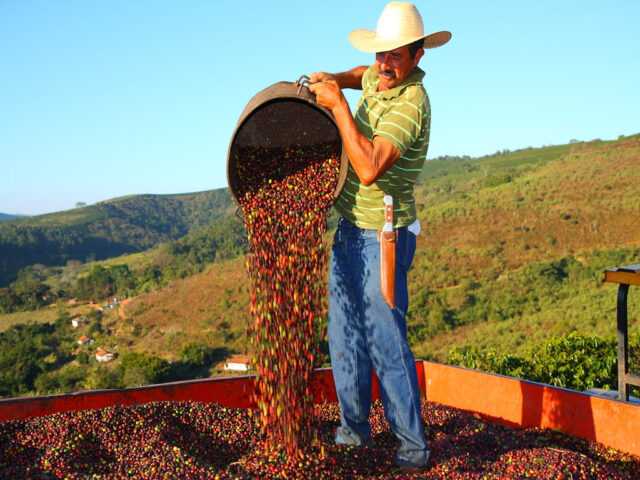SAO PAULO, Brazil – The Arabica volume left from the 2016/17 season at growers and cooperatives is around 20% of the production, considering regions surveyed by Cepea. In the same period last year, roughly 15% of the crop was still available to be traded.
Most part of this product left in 2017 has intermediate quality, but there is also high and low quality coffee beans, depending on the region. In south Minas Gerais and in Mogiana and Garça (São Paulo State), for example, the remaining coffee beans of the 2016/17 season (20%) have all standards.
In Cerrado and Zona da Mata (Minas Gerais), 20% and 25%, respectively, of the crop can still be traded.
In both regions, players surveyed by Cepea say that the arabica supply has high-quality beans, which were sitting in stocks to be traded when prices are higher.
In northwestern Paraná, on the other hand, only 10% of the season remains to be traded and most part has low quality – this product, in turn, will be allocated to the domestic industry.
As for trades involving the 2017/18 product, the pace is slow. Only in Cerrado and south of Minas Gerais and in Garça (SP) growers closed, in October last year, contracts to deliver in September and October. In Oct/16, arabica quotes were at high levels and, therefore, coffee prices reached 600.00 BRL per bag.
Robusta
Trades continue to move at a slow pace. Both in Espírito Santo and Rondônia, the 2016/17 coffee supply, 10% and 5% respectively, is even more restricted compared to arabica. Growers are still waiting for higher prices to trade.
Exportations
The pace of Brazilian shipments continues slow in this 2016/17 season. Between July/16 and February/17, Brazil exported 20.5 million bags of green coffee, 9% smaller compared to the same period of the 2015/16 season, according to Cecafé (Coffee Exporters Council).
Robusta continues to drive the decreases of exportations – in February, the volume was the fourth lowest (9.6 thousand 60-kilo bags) of Cecafé historical series, started in 1990. The revenue from shipments, in turn, rose 2% comparing the accumulated of the season (Jul/16 – Feb/17) to the same period in the last crop.















